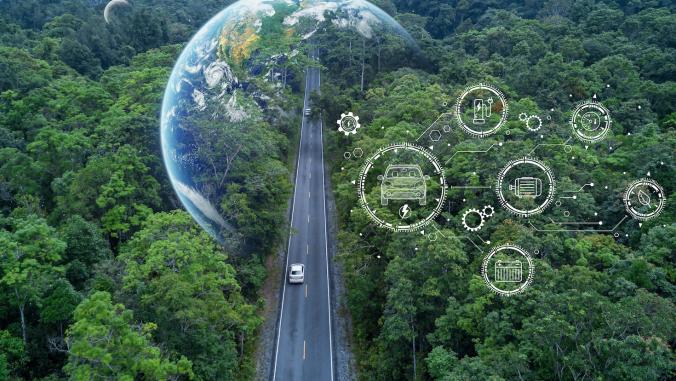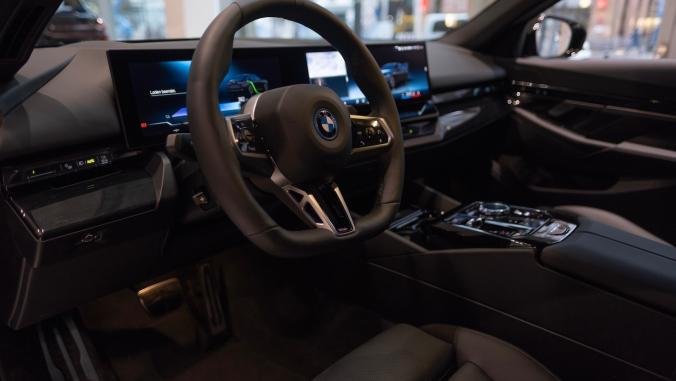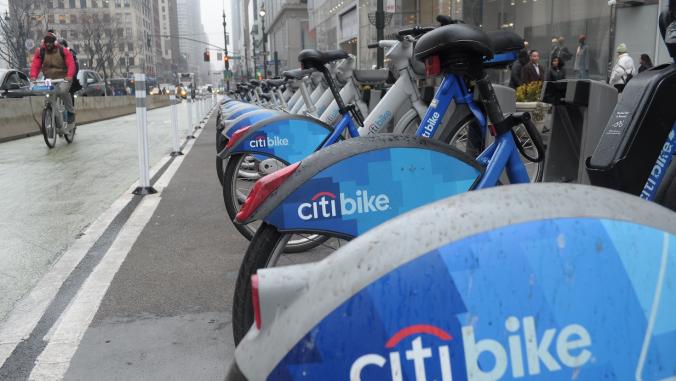On Nov. 15, President Joe Biden signed the Bipartisan Infrastructure Investment and Jobs Act into law, also known as the Bipartisan Infrastructure Framework (BIF). Among the many historic accomplishments, the legislation grants the Department of Transportation a whopping $7.5 billion to invest in building out a national electric vehicle (EV) charging network. This is critically important as the U.S. must decarbonize its transportation sector, which accounts for the largest source of emissions in the country.
Currently, there are an expansive array of EV charging stations used in the U.S. These charging stations range in type and power output that reflect how fast they charge a vehicle. The two most prevalent charging stations are Level 2 stations, which typically add 20-25 miles of range per hour of charging, and direct current fast charging (DCFC) stations, which offer much faster charging speeds and can typically charge a vehicle from 0-80 percent in 30 minutes.
According to the U.S. Department of Energy, there are a little over 51,000 public EV charging stations in the U.S. and parts of Canada. Current deployments are far from the 1 million-plus mix of public Level 2 and DCFC stations needed in the U.S. by 2030 to support the estimated 26 million EVs that could be on the road by then including a significant portion of the total 5.4 million corporate and ridesharing vehicles committed under the Climate Group’s EV100 commitment.
As such, the BIF is crucial as it hopes to build on what already exists and go further. It will help bring EV charging stations to areas where historically underserved communities have been neglected when deploying these technologies.
To accelerate the transition to 100% zero-emission vehicle (ZEV) sales for new passenger vehicles in the US, the emphasis on charging infrastructure must equally focus on deploying more stations and ensuring a reliable driver experience.
Getting more EV charging stations into the ground will help provide U.S. drivers greater reassurance that they can find a charging station and fully transition to electric vehicles. However, an even larger issue exists that the federal government can begin to address as well.
Simply put, the EV charging experience for drivers in the U.S. is unreliable. It’s more common for DCFC stations to experience reliability issues versus Level 2 charging stations that provide slower charging speeds and are mechanically less complex. It should also be noted, Tesla’s Supercharger network, which provides fast charging for only Tesla customers, is not perfect but is far better on uptime and driver satisfaction than non-Tesla charging networks operating in the U.S.
Too often, drivers face situations in the U.S. where publicly available fast-charging stations charge at far slower speeds than displayed, are broken upon arrival, incorrectly advertised by operators or fail to start a charge when plugged in. The situation is similar across Europe and other major EV markets globally as well, where drivers face too many barriers to charge reliably. As much as this hurts consumer adoption, it also harms corporate fleets as they transition to EVs. Business and fleet manager efficiency, effectiveness and ability to transition to electric transport depends on reliable infrastructure. Frequent situations where drivers struggle to recharge their corporate vehicle when delivering products or driving to a work location are barriers to full fleet transition and EV adoption. As such, reliability issues must be addressed, otherwise they may discourage companies to aggressively transition to EVs while available vehicle models exist, today.
With EV charging reliability such a prevalent issue, it's great to see leading states and businesses in the U.S. and Canada collectively advocate for critical public EV fast charging principles to equitably improve the installation, operation and maintenance of charging stations and offer a better driver and community experience. These principles are supported by leading EV100 members such as ABB, Siemens and National Grid along with key state and provisional governments such as Washington state. Members recognize the importance of looking beyond deploying a charging station to also prioritize maintenance and operation.
This analysis conducted in 2020 rated all non-Tesla leading DCFC charging providers in the U.S. by charging experience. Not one charging provider received a score above 700 out of a total of 1,000 possible points. That is basically a D paper grade. To accelerate the transition to 100 percent zero-emission vehicle (ZEV) sales for new passenger vehicles in the U.S., the emphasis on charging infrastructure must equally focus on deploying more stations and ensuring a reliable driver experience. Otherwise, we risk slowing down EV adoption as first-time EV drivers and fleet managers come face-to-face with the realities of charging at public DCFC stations. For any corporate sustainability team pressing their fleet managers to procure more EVs in their fleet, these public EV charging hurdles may dissuade progress if not addressed.
The U.S. has a unique opportunity to bolster the national EV industry and create a reliable, accessible and enjoyable EV charging experience. Through BIF, the U.S. should allocate critical infrastructure funding for improving the driver charging experience while deploying more charging stations.
There are several pathways to improve these public EV charging hurdles including implementing clear redundancy requirements for any DCFC charging locations using public funding. Redundancy would require multiple DCFC charging stations in each location with sufficient connector types should one charging station be broken or inoperable for any reason. Additionally, DCFC charging station and software and firmware providers should work to integrate their technology with applicable third-party services and automotive companies and ensure the most up-to-date information as possible for drivers.
The public, as well as key states and businesses on the ground, have experienced these issues first-hand and are demonstrating the demand and need for a reliable charging system that will enable EV adoption. The U.S. must take advantage of the current opportunity provided by the BIF to electrify transportation. Leading states and businesses look to the federal government to ensure public funds go towards improving the installation, operation and maintenance of charging infrastructure and make EVs accessible for fleets and the public.






